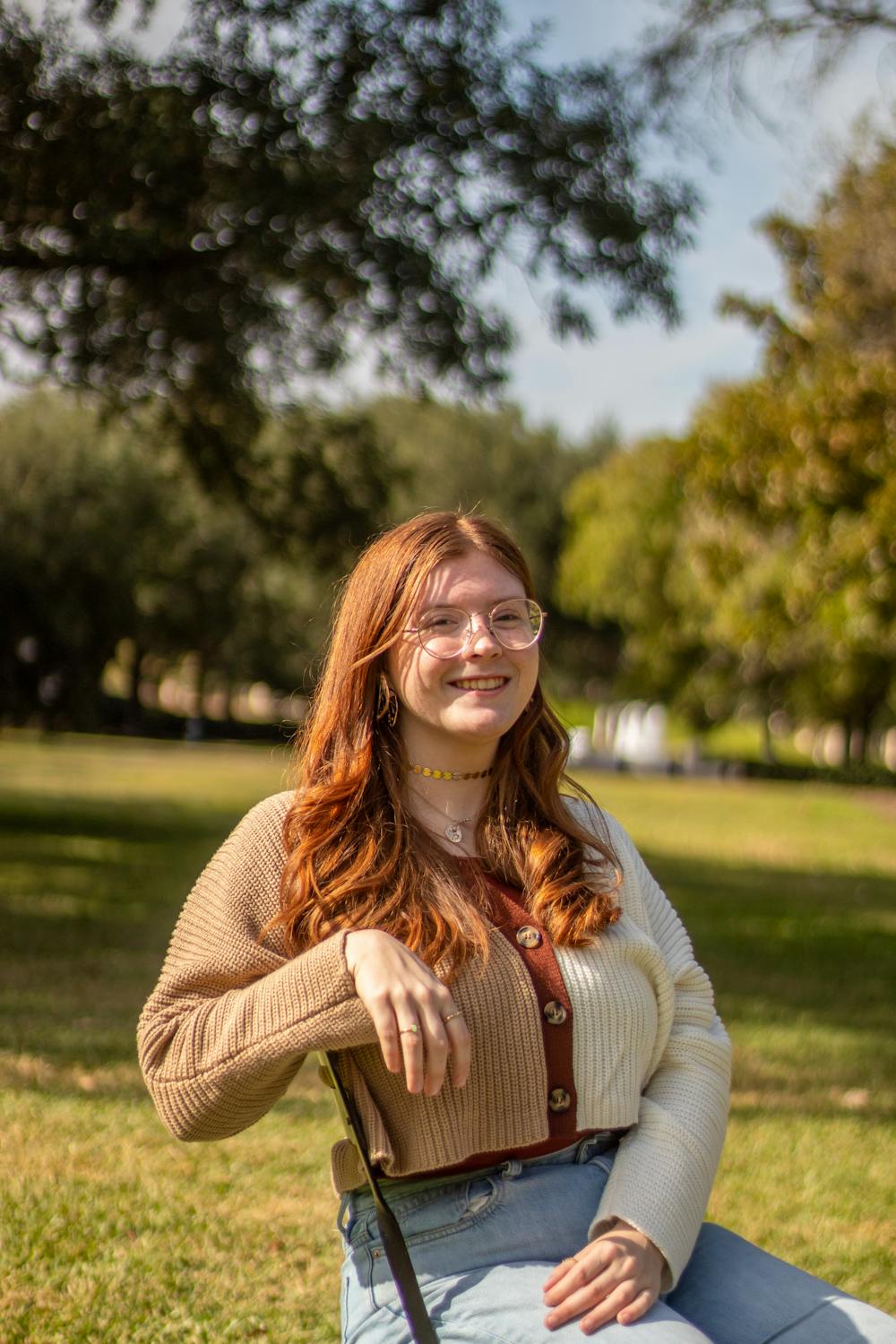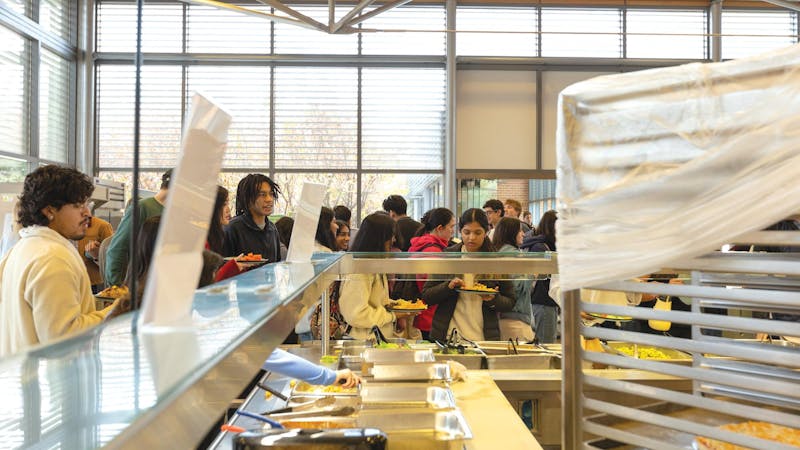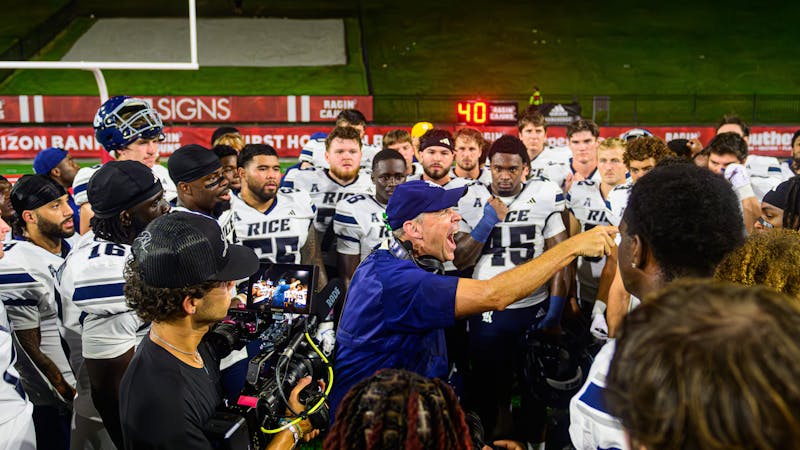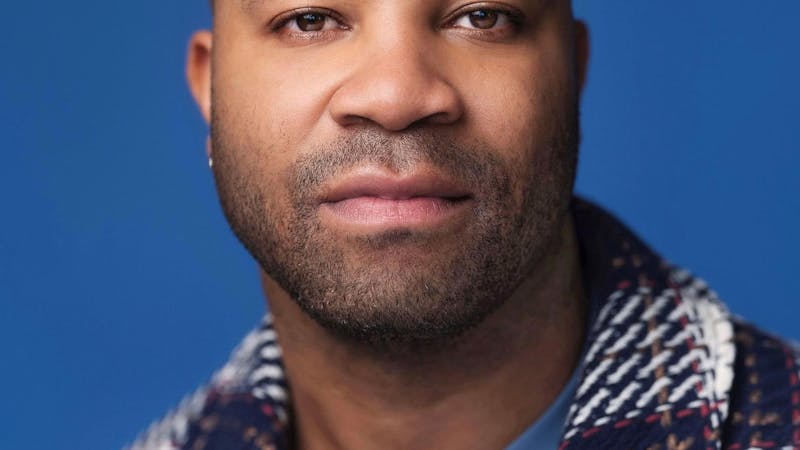Senior Spotlight: Kenzie Pickett brings life to museums

Zeisha Bennett / Thresher
Kenzie Pickett accomplishes the impossible — she revives centuries-old artifacts for the modern world. As a Camfield fellow at the Museum of Fine Arts, she spends 10 to 15 hours each week researching historical objects, preparing for the museum’s new traveling exhibit and writing tombstones, which are 100-word labels that describe each artwork. At Rice, Pickett is double majoring in art history and ancient Mediterranean civilizations and double minoring in museum studies and cultural heritage. Her interest in curatorial work and museums was first ignited as a child, when she watched “Jurassic Park” and “Night at the Museum,” in which characters are magically resuscitated, reentering the 21st century as new beings.
“What these movies captured was the imagination of what a museum could be,” Pickett, a Brown College senior, said. “You have these static objects, and the first impression is that they’re dead, in the sense that they’re inanimate and there’s nothing interesting going on. But there’s this magic in the movie — in a literal sense, magic that’s bringing everything to life. You’re able to actually have conversations with these pieces and experience the culture and the history firsthand.”
Pickett says that viewers’ ultimate goal is to connect with these pieces. She considers museums active spaces rather than static ones, but says that many museums fall short of creating an engaging space. According to Pickett, people typically have misconceptions about museums in more ways than one.
“I’m fully aware that ‘Jurassic Park’ is paleontology,” Pickett said. “But the amount of times when I say I’m interested in archaeology, people are like, ‘Oh, you dig up dinosaurs?’ is astronomical. It’s ridiculous. I don’t know why people have this conception, but I always handle it gently and say, ‘No, it’s human culture.’”
Pickett said that she was already familiar with the museum’s curatorial department after working there her freshman year for a practicum sponsored by the art history department. She was interested in the Camfield Fellowship, where she works under associate curator Chelsea Dacus, because it allows her exposure to art she isn’t familiar with — particularly Indigenous American and Pacific art.
Additionally, the fellowship allows Pickett to engage with artwork beyond constraints of time, geographic or physical boundaries. Recently, Pickett was given the opportunity to touch a Columbian gold piece.
“I do get the opportunity to walk through the exhibit spaces and see that art, and be intimately close with it, which is definitely interesting,” Pickett said. “They’ll be like, ‘Here’s this 2,000 year-old pot, would you like to touch it?’ And I’m like, ‘I don’t think so.’ I feel like that’s a legal issue that I don’t want to get caught up in. But I appreciate the opportunity.”
Incorporating old artifacts into the modern world also calls for them to be included in recent movements for increased accessibility in museums. Pickett, who eventually hopes to work in a curatorial position, says that museums have a connotation of being boring and stuffy. She wants to open the space to visitors of all ability levels and educational backgrounds so that everyone can connect with the artwork.
“I definitely think museum spaces physically need to be changed,” Pickett said. “I don’t know if you’ve had this experience, but I hear about it every time my mom goes to a museum with me: there are no places to sit. It’s like a single bench and a massive gallery, and that’s it.”
For Pickett, creating increased accessibility in museum spaces also includes simplifying the information, particularly when writing tombstones.
“I feel like a lot of art history is hidden behind this academic wall, or the ivory tower,” Pickett said. “If you don’t know the art, there’s no way for you to learn about the art, or you’ll be ridiculed for it … I think every art historian professor should be forced to write 100-word labels, because you immediately have to go into a casual language with it.”
Although Pickett’s academic focus has been Western-centric because of her focus on the Mediterranean, she says that Rice’s art history curriculum reflects the diversity that more museums have been including in their curations.
“I don’t think I’ve ever met just a normal art history professor,” Pickett said. “They’re always a character, and I always love that because I’m like, ‘Ooh, a new person that I get to experience – this is great.’ But the department itself, [in terms of] preparing me for what I wanted to do with my research, they’re very supportive.”
Pickett encourages any interested students to remain open to new opportunities that the department offers, particularly because of their flexibility in providing financial accommodations.
“I would urge people, if they are interested in art, the art history department or going to museums, to just keep an open mind,” Pickett said. “Always go in with not so much the expectation that you’re going to get something out of it, but instead that this is going to be a new experience for you. It’s not just stuffy museums and old artworks, it’s legitimately a very fun program.”
More from The Rice Thresher

Over 1,000 students petition against new meal plan
When Konstantin Savvon opened the Housing and Dining email announcing the new unlimited meal plan, he was instantly concerned about the impact on off-campus students like himself.

Rice football wins season opener under new coach
For the first time since 2018, Rice football opened its season with a victory. Scott Abell was soaked with yellow Powerade following a 14-12 win on the road Saturday against the University of Louisiana at Lafayette, which won 10 games and made it to the Sun Belt Conference championship last season.

Acting like an athlete: Rice basketball alum takes on Broadway
Underneath Chadd Alexander’s Broadway costume, there’s ankle tape and wrist braces — same protective gear he wore as a walk-on basketball player at Rice, though now he’s performing eight shows a week in the ensemble of “Harry Potter and the Cursed Child” instead of running conditioning drills in Tudor Fieldhouse.

Please note All comments are eligible for publication by The Rice Thresher.